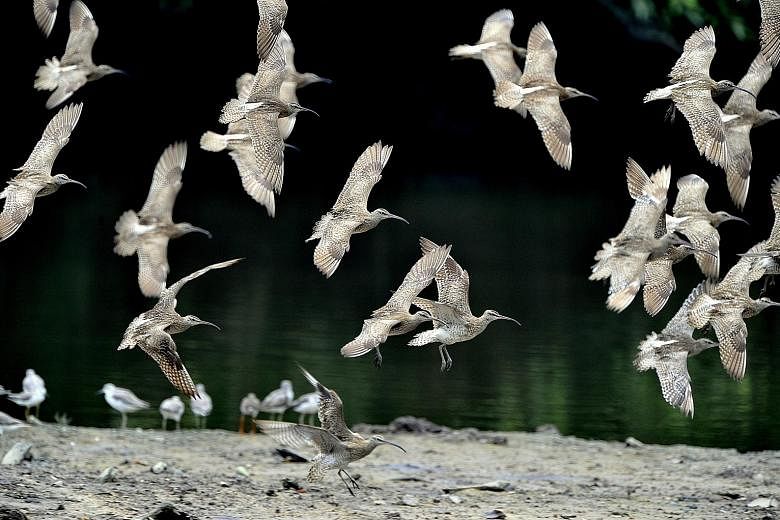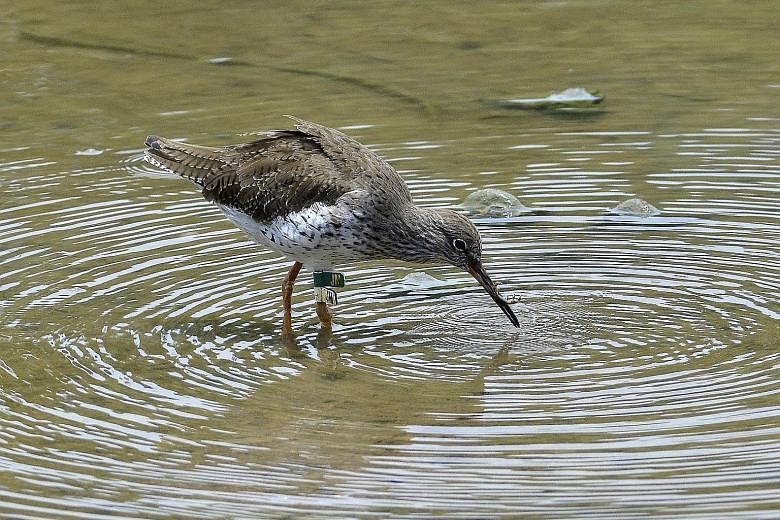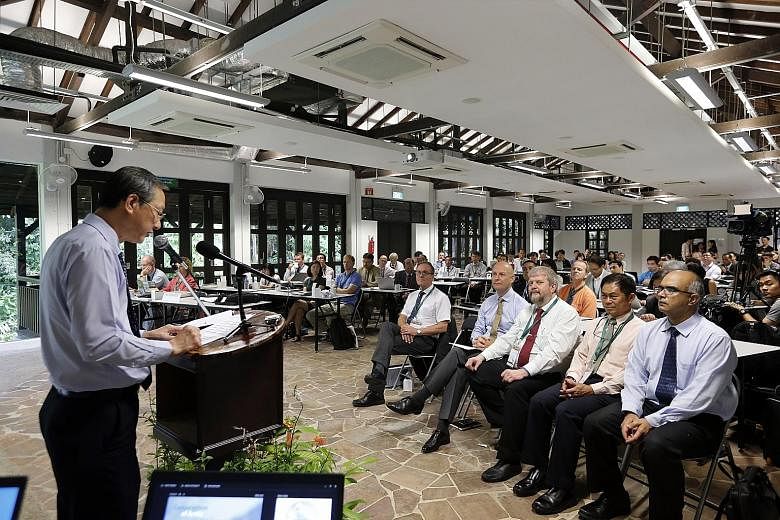The travel times, stopovers and breeding patterns of Singapore's avian tourists are being placed under scrutiny here, as the National Parks Board (NParks) launches a two-year satellite tracking project on 22 migratory birds which travel to Singapore in the winter months.
The data will play a critical role in the survival of various species which use the Republic as a stopover point to feed and rest before continuing their arduous journey as far north as the Arctic Circle.
"Before we started using tracking technology, we did not know precisely where the birds go... With technology, we know who specifically to work with," explained NParks senior conservation officer David Li, speaking on the sidelines of the first Arctic migratory birds workshop held in Sungei Buloh Wetland Reserve yesterday.
"With these studies, we know which countries they go to for major stopovers, for instance, and sharing such information with those countries will help in setting up bird conservation projects there."
The shorebirds being tracked include whimbrels, bar-tailed godwits, common greenshanks and grey plovers. With the new satellite trackers, researchers will be able to tell exactly where they are in real time, without having to recapture them. The devices weigh either 5g or 9.5g and are solar-powered. The study is likely to start in March.
The upcoming project builds on NParks' efforts to tap technology to obtain previously unknown information about birds.
Between September 2015 and last March, NParks recaptured seven common redshanks tagged with geo-locators, which can detect light and are used to record the location of the birds based on sunset and sunrise. It learnt that the birds' main stopovers include the Inner Gulf of Thailand and that they breed at the Tibet-Qinghai Plateau in China. The catch, however, was that the birds had to be caught again for the data to be analysed.
Nearly 100 delegates from 35 organisations and 22 countries attended the workshop yesterday, where they discussed the conservation of Arctic birds along the East Asian- Australasian Flyway, which extends from within the Arctic Circle southwards through East and South-east Asia, to Australia and New Zealand.
Sungei Buloh annually enjoys "winter holiday visits" by more than 2,000 Arctic migratory birds of more than 30 different species.
"Essentially, you have to take care of these birds all along the flyway. For instance, if you are making big efforts in Singapore but actually the birds are suffering more in other parts of the flyway like China or Australia, then it is much less effective," said Mr Spike Millington, chief executive of the East Asian-Australasian Flyway Partnership.
"It is really imperative we have international cooperation so that the birds are protected and conserved all the way along the flyway when they make their journey down south in the autumn and back in the spring."



